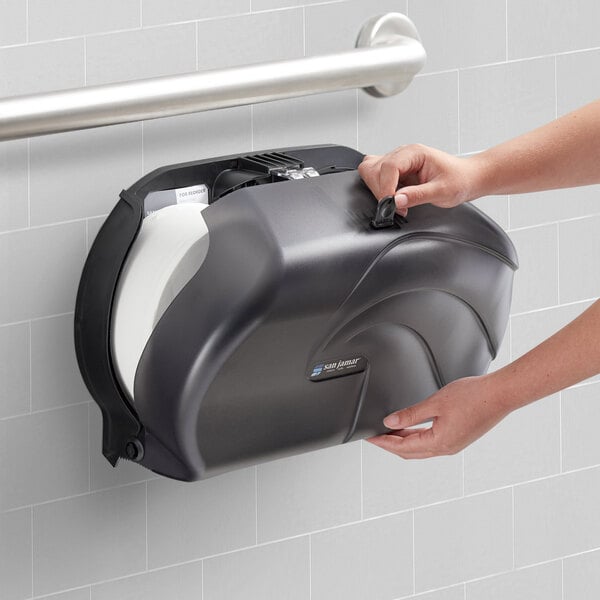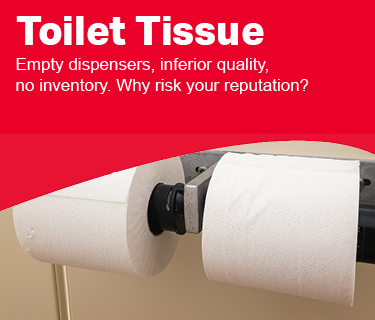toilet tissue roll dispensers are an essential fixture in every household and public restroom, providing convenience and hygiene. This comprehensive guide will explore the world of toilet tissue roll dispensers, covering a wide range of topics such as types, features, benefits, installation, and maintenance.
The Evolution of toilet tissue dispensers

Early Designs
The history of toilet tissue dispensers dates back to the late 19th century when perforated toilet paper became widely available. Initially, toilet paper was sold in individual sheets, with users tearing off what they needed. As demand grew, the need for a more efficient way to dispense toilet paper arose.
Invention of the Roll Dispenser
In 1883, the first patent for a toilet paper roll dispenser was filed by New York businessman Seth Wheeler. His design featured a spindle on which a roll of toilet paper could be mounted, allowing users to easily tear off individual sheets. This invention revolutionized the way toilet paper was used and paved the way for modern toilet tissue roll dispensers.
Modern Innovations
Over the years, toilet tissue roll dispensers have evolved to include a wide variety of designs and features. From single-roll dispensers to high-capacity jumbo roll dispensers, there is a dispenser to suit every need. Modern innovations also include touchless dispensers, antimicrobial coatings, and smart dispensers that monitor usage and provide alerts when refills are needed.
Types of Toilet Tissue Roll Dispensers

When it comes to choosing a toilet tissue roll dispenser, there are several options available to meet different needs and preferences. Here are some of the most common types:
| Type | Description |
|---|---|
| Single-Roll | Compact design ideal for smaller restrooms or under-the-counter installations |
| Double-Roll | Holds two rolls simultaneously, perfect for high-traffic areas or restrooms with multiple users |
| Jumbo Roll | Accommodates large-capacity rolls for businesses and high-volume restrooms |
| Recessed | Offers a sleek and concealed appearance, suitable for a professional and stylish look |
Single-Roll Dispensers
Single-roll dispensers are designed to hold and dispense one roll at a time. They are compact in size and are perfect for smaller restrooms or installations where space is limited. These dispensers are easy to refill and maintain, making them a popular choice for residential bathrooms.
Double-Roll Dispensers
Double-roll dispensers are larger in size and can hold two rolls simultaneously. This eliminates the need for frequent refills, making them ideal for high-traffic restrooms or facilities with multiple users. The dual-roll design ensures that there is always a steady supply of tissue available.
Jumbo Roll Dispensers
Jumbo roll dispensers are designed to accommodate extra-large rolls of toilet tissue. These dispensers are commonly used in businesses, institutions, and high-traffic restrooms where frequent refills are not practical. Jumbo roll dispensers can be wall-mounted or floor-mounted, depending on the available space and installation requirements.
Choosing the Right Dispenser for Your Needs

When selecting a toilet tissue roll dispenser, there are several factors to consider to ensure you choose the right one for your needs. Here are some key considerations to keep in mind:
- Capacity: Determine how many rolls of toilet tissue you will need to dispense regularly. For high-traffic restrooms, a dispenser with a larger capacity may be more suitable to reduce the frequency of refills.
- Mounting Options: Consider whether you prefer a wall-mounted or floor-mounted dispenser. Wall-mounted dispensers are ideal for saving space, while floor-mounted dispensers offer flexibility in placement.
- Dispensing Style: Choose between manual dispensers, which require users to tear off individual sheets, or automatic dispensers, which dispense tissue with a wave of the hand. Automatic dispensers are preferred for their touchless operation and enhanced hygiene.
- Material and Finish: Select a dispenser made from durable materials such as stainless steel or ABS plastic for long-lasting performance. Consider the finish of the dispenser to complement the aesthetics of your restroom.
- Locking Mechanism: If security is a concern, opt for a dispenser with a locking mechanism to prevent theft or tampering. Lockable dispensers are recommended for public restrooms or commercial settings.
Installation and Maintenance of Tissue Roll Dispensers
Proper installation and maintenance are essential to ensure the optimal performance and longevity of your toilet tissue roll dispenser. Follow these guidelines to install and maintain your dispenser correctly:
Installation
- Choose the Right Location: Select a suitable location for mounting the dispenser, ensuring it is easily accessible to users.
- Secure the Dispenser: Follow the manufacturer’s instructions to securely mount the dispenser to the wall or floor using the provided hardware.
- Load the Tissue Rolls: Insert the toilet tissue rolls into the dispenser according to the manufacturer’s guidelines, making sure they are properly aligned for smooth dispensing.
Maintenance
- Regular Cleaning: Clean the dispenser regularly using mild soap and water to remove dirt, grime, and bacteria. Avoid using harsh chemicals that may damage the dispenser’s finish.
- Check for Wear and Tear: Inspect the dispenser for any signs of damage or wear, such as cracks, dents, or loose parts. Replace any worn components to maintain the dispenser’s functionality.
- Refill as Needed: Monitor the tissue levels in the dispenser and refill as needed to ensure a continuous supply for users. Keep extra rolls on hand to avoid running out of tissue.
Troubleshooting Common Dispenser Issues
Despite regular maintenance, toilet tissue roll dispensers may encounter issues that require troubleshooting. Here are some common problems you may encounter and how to address them:
- Dispenser Jamming: If the tissue rolls get stuck or jammed in the dispenser, check for obstructions or misaligned rolls. Remove any blockages and realign the rolls for proper dispensing.
- Loose Dispenser Parts: If the dispenser becomes loose or wobbly, tighten the mounting screws or bolts to secure it to the wall or floor. Ensure all components are properly attached to prevent further movement.
- Low Battery Indicator: For electronic or automatic dispensers, a low battery indicator may appear when the batteries need to be replaced. Follow the manufacturer’s instructions to replace the batteries promptly.
Smart Dispensers: The Future of Toilet Tissue Distribution
Smart dispensers are revolutionizing the way toilet tissue is distributed and managed in public restrooms and commercial facilities. These innovative dispensers are equipped with advanced features that enhance efficiency, convenience, and hygiene. Here are some key benefits of smart dispensers:
- Usage Monitoring: Smart dispensers can track the usage of toilet tissue rolls in real-time, providing valuable data on consumption patterns and refill frequencies.
- Automatic Alerts: When the tissue levels are running low, smart dispensers can send automatic alerts to maintenance staff or janitorial teams, ensuring timely refills.
- Touchless Operation: Many smart dispensers offer touchless operation, reducing the risk of cross-contamination and promoting better hygiene practices.
- Improved Sustainability: By optimizing tissue usage and reducing waste, smart dispensers contribute to overall sustainability efforts and environmental conservation.
Sustainability and Toilet Tissue Dispensers
In recent years, there has been a growing emphasis on sustainability and eco-friendly practices in the design and manufacturing of toilet tissue roll dispensers. Manufacturers are incorporating environmentally friendly materials, energy-efficient technologies, and innovative features to reduce waste and promote sustainability. Here are some ways in which toilet tissue dispensers are becoming more sustainable:
- Recycled Materials: Many manufacturers are using recycled materials such as post-consumer plastics or metal alloys to create eco-friendly dispensers that minimize environmental impact.
- Refillable Dispensers: Refillable dispensers allow users to replace empty tissue rolls with new ones, reducing the amount of waste generated from disposable packaging.
- Energy-Efficient Operation: Some smart dispensers are designed to operate on low power consumption, conserving energy and reducing overall environmental footprint.
Space-Saving Dispensers for Small Bathrooms
For small bathrooms or compact spaces, finding the right toilet tissue roll dispenser that saves space without compromising functionality is essential. Space-saving dispensers come in a variety of designs and styles to fit snugly in tight areas while still providing easy access to toilet tissue. Here are some popular space-saving dispenser options:
- Compact Wall-Mounted Dispensers: Wall-mounted dispensers are ideal for small bathrooms as they free up floor space and keep the area clutter-free. Choose a slim, streamlined design that blends seamlessly with the decor.
- Recessed Dispensers: Recessed dispensers are installed into the wall, offering a sleek and flush appearance that maximizes space utilization. These dispensers are discreet and stylish, perfect for modern bathrooms.
- Over-the-Tank Dispensers: Over-the-tank dispensers hang over the back of the toilet tank, utilizing vertical space efficiently. These dispensers are easy to install and do not require any drilling or mounting hardware.
Designer Dispensers to Enhance Bathroom Aesthetics
In addition to functionality, toilet tissue roll dispensers can also enhance the aesthetics of a bathroom and complement its design theme. Designer dispensers come in a variety of styles, finishes, and materials to add a touch of elegance and sophistication to any restroom. Here are some popular designer dispenser options:
- Stainless Steel Dispensers: Sleek and modern, stainless steel dispensers offer a contemporary look that pairs well with industrial or minimalist decor styles.
- Wood Grain Dispensers: Wooden dispensers provide a warm and natural aesthetic, adding a rustic charm to traditional or farmhouse-inspired bathrooms.
- Colorful Plastic Dispensers: Brightly colored plastic dispensers are perfect for adding a pop of color to a neutral bathroom or creating a fun and vibrant atmosphere.
Cost-Effective Dispensers for Business and Public Restrooms
For businesses, institutions, and public facilities, cost-effective toilet tissue roll dispensers that balance affordability with durability are essential. These dispensers must be able to withstand heavy use and high traffic while remaining budget-friendly for large-scale installations. Here are some cost-effective dispenser options for commercial settings:
- ABS Plastic Dispensers: Durable and economical, ABS plastic dispensers are a popular choice for commercial restrooms due to their impact resistance and low maintenance requirements.
- Bulk Pack Dispensers: Bulk pack dispensers offer a cost-effective solution for high-traffic restrooms by dispensing individual sheets of toilet tissue, reducing waste and controlling consumption.
- Value Pack Dispensers: Value pack dispensers come with multiple rolls of toilet tissue in a single package, offering savings on bulk purchases for businesses with multiple restroom facilities.
Conclusion
Toilet tissue roll dispensers are indispensable fixtures that play a vital role in maintaining hygiene and convenience in both residential and commercial settings. With a wide range of types, features, and designs available, choosing the right dispenser for your needs is essential. Whether you opt for a space-saving design, a designer dispenser to enhance aesthetics, or a cost-effective option for business use, there is a dispenser to suit every requirement. By understanding the different types of toilet tissue roll dispensers, their installation and maintenance requirements, and the future trends in smart dispensers, you can make an informed decision that meets your specific needs and preferences.